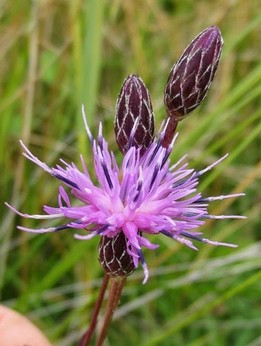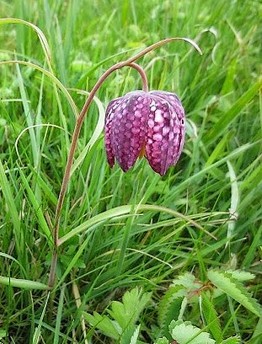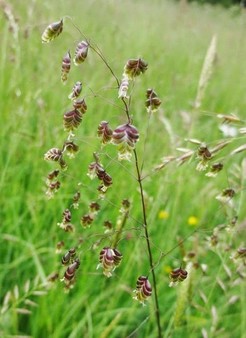Oxford Meadows Special Area of Conservation (SAC)
For more photos taken by Judy on that visit, click here
Photos taken in Pixey Mead by Judy in May 2017
During one of her visits there Judy counted 225 early marsh orchids,
Dactylorhiza incarnata, the highest number ever. These orchids vary in colour.
Photos taken in Pixey Mead by Judy in May 2017
During one of her visits there Judy counted 225 early marsh orchids,
Dactylorhiza incarnata, the highest number ever. These orchids vary in colour.
Floodplain Meadows: Beauty and Utility - a Technical Handbook
FREE to download from the Floodplain Meadows Partnership - 104 pages.
(Judy contributed to this) Beautifully produced with lots of fascinating historical information
and lovely photos. 'Technical' here does not mean hard to read - it's entertaining!
FREE to download from the Floodplain Meadows Partnership - 104 pages.
(Judy contributed to this) Beautifully produced with lots of fascinating historical information
and lovely photos. 'Technical' here does not mean hard to read - it's entertaining!
|
Oxford Meadows SAC (Special Area of Conservation)
is indicated by purple diagonal lines on this Defra map Oxford Meadows SAC has been given this designation because of its European Importance. Quoting from a Defra website: ‘The site includes vegetation communities that are perhaps unique in the world in reflecting the influence of long-term grazing and hay-cutting on lowland hay meadows. The site has benefited from the survival of traditional management, which has been undertaken for several centuries, and so exhibits good conservation of structure and function’. There are less than 1,500 ha in total of this diverse floodplain meadow flora association left in the UK, and it survives at scattered and mostly small sites. All of the haymeadows in the Oxford Meadows SAC fall into the valuable and severely-declined NVC (National Vegetation Classification) Lowland Meadow MG4 (Meadow Foxtail Alopecurus pratensis–Great Burnet Sanguisorba officinalis association) and, more specifically, contain the most species-rich types, known as MG4a and MG4b. Only between 1200 and 1350ha of all subtypes of MG4 are left in England and Wales and there is even less of the most species-rich MG4a and MG4b types. A significant proportion of all MG4* type vegetation is to be found in Oxford Meadows SAC Alopecurus pratensis – Sanguisorba officinalis grassland. This community is characterised by species-rich swards containing frequent red fescue Festuca rubra, crested dog’s-tail Cynosurus cristatus, meadow foxtail Alopecurus pratensis, great burnet Sanguisorba officinalis, meadowsweet Filipendula ulmaria and meadow buttercup Ranunculus acris. It provides the main habitat in the UK for the fritillary Fritillaria meleagris *Why are these very specific classifications of flower communities important? A report funded by the Floodplain Meadows Partnership explains: "Understanding the community assemblages enables improved understanding of soil-water levels and soil fertility at a site. Understanding the subtle differences in plant community at a site will help to alert site managers to potential changes in soil water, fertility and management, enabling action to be taken to reverse any negative changes". From A revision of the Alopecurus pratensis - Sanguisorba officinalis (MG4) grassland community of the NVC 2014 |
How Judy's interest in the floodplain meadows began
The areas that make up the Oxford Meadows SAC are indicated on a Defra map.by purple diagonal lines. They include meadows used for grazing: Port Meadow with Wolvercote Common SSSI (but not Wolvercote Green, although it is part of the same SSSI) Cassington Meadows SSSI and also the following, which are the haymeadows: Pixey Mead and Yarnton Mead* SSSI *also known as West Mead Photos taken by Judy Webb in Yarnton Mead Oxey Mead SSSI owned by BBOWT and managed by FAI Farms The following are NOT part of the SAC: Hinksey Meadow LWS (Local Wildlife Site) owned by Oxford Preservation Trust New Marston Meadows SSSI Wolvercote Green SSSI Oxford Meadows Important Plant Area - mapped by Plantlife Dr Alison McDonald, a local expert on floodplain meadows, talks about her long-term study of the Oxford Meadow SAC in an article on pages 3 to 4 of the Floodplain Meadows Partnership Newsletter, Jan 2011 The Resources page of the FMP website lists her short history of Oxford Meads. 'A brief history of Port Meadow and Wolvercote Common and Picksey Mead, and why their plant communities changed over the last 90 years' This article by Dr McDonald appeared in the 5th edition of Fritillary, the journal of the Ashmolean Natural History Society of Oxfordshire. Notes on Judy’s talk on The Flowers of Oxford’s Floodplain Meadows, given to the Oxford Ornithological Society in February 2017, include a link to her photos of flowers in the Oxford Meadows SAC |
All photos below by Judy Webb




